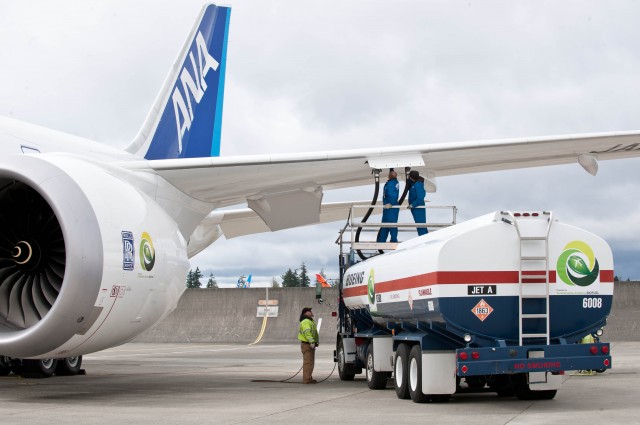Earlier in the week, Boeing and All Nippon Airways (ANA) made aviation history by flying a 787 Dreamliner using a biofuel blend. There were no passengers on board this delivery flight from Evertt’s Paine Field (KPAE) to Haneda Airport (HND), but there was fuel that was primarly made from used cooking oil that emitted an estimated 10% less CO2 emissions.
’œThe 787 is the most environmentally progressive jetliner flying today, combining fuel efficiency and comfort with reduced carbon emissions,’ said Billy Glover, Commercial Airplanes Vice President of Environment and Aviation Policy.
This is also the first biofuel flight to occur over the pacific ocean.
“Our historic flight using sustainable biofuels across the Pacific Ocean highlights how innovative technology can be used to support our industry’s goal of carbon-neutral growth beyond 2020,’ Osamu Shinobe, ANA senior executive vice president, said.
Although biofuel on airlines is still not a cost effective fuel, with new research and technologies I feel that we will start to see the use of this alternative fuel used more and more, not only on airliners, but also in airport operations.
Other stories on biofuels and airlines:
* Alaska and United Use Biofuel on Scheduled Flights
* Lufthansa is First Airline to Use Biofuel on Schedule Flights
* Boeing, Alaska Airlines and Others Work Towards Using Sustainable Biofuels
* Back in January 2009, Boeing Gives Prediction That Biofuel Flights Will Be Arriving Soon

What used to be a rarity (jet biofuel), we are starting to see used on one-off basis more and more. This week Porter used 50% biofuel on a Q400. worldairlinenews has a story every other day of another airline using bio fuels. The more the industry chooses to invest in bio, the cheaper and more plentiful it will be. Just think – an already efficient jet (787) with even less carbon footprint with biofuels, compare that too older, less efficient jets, and the carbon footprint shrinks like crazy.